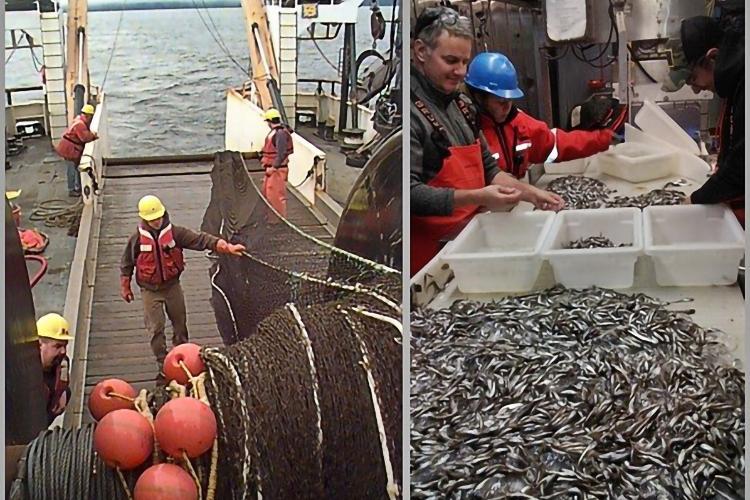Fish are unique among vertebrates due to their exceptional diversity. Most fish begin life in the plankton (drift with ocean currents), but soon transition to a nektonic lifestyle (swim and migrate freely).
In the Gulf of Alaska, the community of small nektonic fish in coastal midwater (neritic) habitat comprises juveniles of economically important species (e.g., walleye pollock, Pacific cod, Pacific Ocean perch and other rockfish, sablefish, and arrowtooth flounder) and adults of other species (e.g., capelin and eulachon). All contribute importantly to the flow of trophic (food) energy that supports the fish, seabirds, and marine mammals that characterize the piscivore-dominated Gulf ecosystem.
Our research is conducted primarily in the field. We collect small neritic fish by midwater trawling using small-mesh nets. Sampling occurs over large geographic areas to estimate fish population size, distribution, and size composition in relation to zooplankton (prey) and environmental condition (water temperature, salinity).
We conduct laboratory work to gain insight on the biology (size, growth, condition) and ecology (food habits, local environment) of individuals. Close coupling of field and laboratory work provides insight into the mechanisms that determine fish survival and production. By studying individual fish response, we can learn more about population-level responses.

